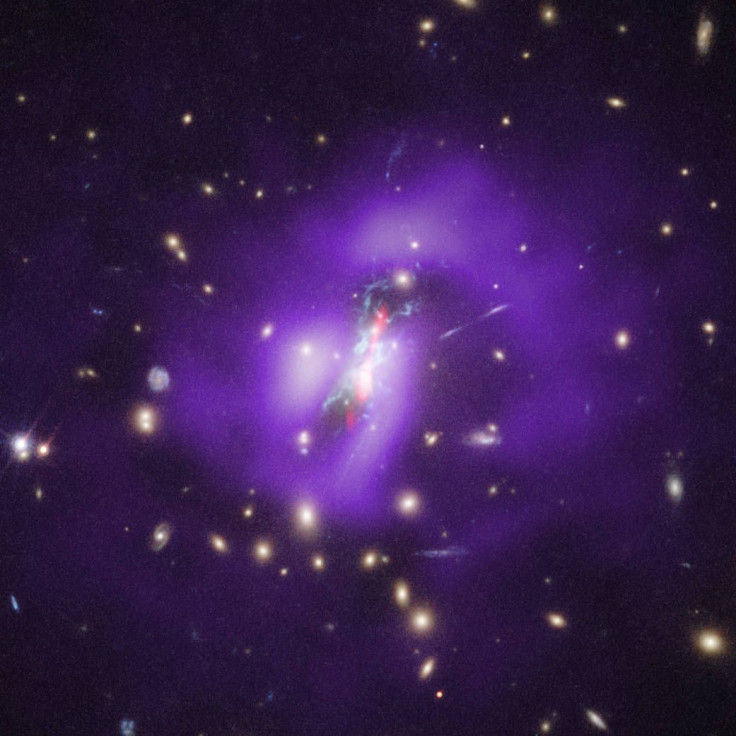NASA Finds First Evidence Of How Black Holes Help Star Formation [Photo]

Using the Hubble Space Telescope and Chandra X-ray Observatory, NASA was able to spot evidence of a weakened supermassive black hole aiding in the rapid formation of stars in a galaxy cluster. According to the agency, the discovery marks the first example of large numbers of stars being formed at the center of the cluster.
NASA spotted the remarkable cosmic event at a galaxy cluster known as the Phoenix Cluster, which is located about 5.8 billion light-years from Earth. Like other clusters, the Phoenix Cluster features a collection of galaxies held together by gravity.
Galaxy clusters are known to host some of the biggest supermassive black holes. Besides being one of the largest objects in space, galaxy clusters are not known to have active star formations. This is mainly due to the high-energy particles being pumped out by their supermassive black holes. According to astronomers, these black holes keep the gas within galaxy clusters too hot for stars to form.
Recently, NASA made a historic discovery after spotting a galaxy cluster with active star formations at its core. After closely observing the Phoenix Cluster using Hubble and Chandra, the agency learned that the supermassive black hole at its center is actually helping the development of new stars.
“This is a phenomenon that astronomers had been trying to find for a long time,” researcher Michael McDonald of the Massachusetts Institute of Technology said in a statement. “This cluster demonstrates that, in some instances, the energetic output from a black hole can actually enhance cooling, leading to dramatic consequences.”
Compared to the black holes in other galaxy clusters, the one in Phoenix Cluster appears to be weaker and more ineffective. Because of this, the supermassive black hole is not able to pump enough particles in the cluster to keep its gas warm.
“Imagine running an air-conditioner in your house on a hot day, but then starting a wood fire. Your living room can’t properly cool down until you put out the fire,” researcher Brian McNamara of the University of Waterloo in Canada explained.
“Similarly, when a black hole’s heating ability is turned off in a galaxy cluster, the gas can then cool,” he added.
© Copyright IBTimes 2025. All rights reserved.





















